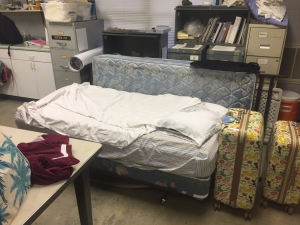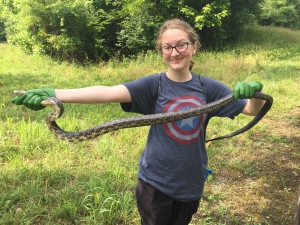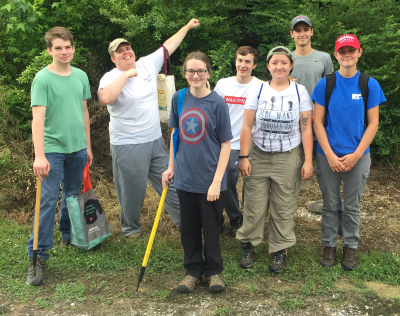
I had not planned on going to TN for the summer until about 3 months ago when I was asked by Dr. Allender how much I wanted to stay in Champaign- Urbana. As you can imagine, while I love my little school town, I was not opposed to leaving the area where I spend 99% of my days in class and studying. So here I am, in Oak Ridge TN for about 2.5 months literally living the dream because I spend my days wrangling snakes. What’s more fun than that?! Okay, I will admit that the ticks, chiggers, and poison ivy that comes along with the job is not that fun. To give you an idea of how dedicated us snake wranglers are, the first day out in the field I had about 20 ticks on me and 2 that had latched on. I just have to say that I have an EXTREME and irrational fear of arachnids of any sort; spiders, ticks, misquitos, lady bugs even. I told you it was irrational. But I’m working on my phobia and I have a feeling this is the summer that I conquer it! Mostly, because I don’t really have a choice.
Okay, back to the COOL snake research. My main purpose down here is looking for the prevalence of Snake Fungal Disease (SFD) in these snakes. Snake fungal disease is caused by a fungus called Ophidiomyces ophiodiicola. I like to stick with SFD although saying Ophidiomyces ophiodiicola makes you sound a lot more scientific. This fungus is relatively new so veterinarians, researchers, and biologists have a lot of questions that still remain unanswered. We know it affects the skin and that’s how we detect and diagnosis SFD. Different types of lesions are a symptom that becomes present as the disease progresses. (Pictures of the lesions to come as the summer goes on!) We don’t know how it is transmitted. Is it snake to snake? Or does it remain in the environment and get passed along in the soil? You’re guess is as good as ours and hopefully, we will soon be able to answer that!
How do we catch the snakes you ask? Well, there are probably at least 150 coverboards, each site has one tin and one wooden coverboard, that we lift and cross our fingers and toes we will find a snake underneath. The wooden boards are 4 feet by 4 feet and the tins are slightly larger. We lift each coverboard with a snake hook about a foot in the air until we grab it just in case there is a copperhead (venomous snake) underneath. Safety is always first! We caught our first copperhead last week and it was as exciting as I’d thought it would be! Being a part of Dr. Matt Allender’s Wildlife Epidemiology Lab, I am venomous snake trained and feel comfortable in the protocol and technique for safely tubing and swabbing these snakes to include into my data.

The cool thing about what I’m doing down here that is different than other research I have down in the past, is that I get the opportunity to share my little yet growing knowledge I have with the bright young minds of the future! There is amazing organization down here called CRESO (Clinch River Environmental Studies Organization) run by a unique and very caring man named John. This allows middle school and high school students to get their hands wet in different herpetological and wetland programs that get them interested in science (yay science!) that helps them learn at a young age how important they are in contributing to the ‘One Health’ concept. The definition of ‘One Health’ given by the AVMA (American Veterinary Medical Association) is the “integrative effort of multiple disciplines working locally, nationally, and globally to attain optimal health for people, animals, and the environment.” (avma.org). Basically, we are all one, and the goal is to live in balance with people, animals, and the environment. It just so happens that the most comfortable I feel around kids and students is when I’m talking about snakes (I’m a nerd).
I have been here for almost 3 weeks thus far, with the high school students now joining me on my snake journey, we are getting a system down for swabbing and collecting data (age, sex, weight, length). I’m working with some great undergrads who have been amazing in helping me thus far! Kelsey and Jordan are seniors at the University of Tennessee and have been involved with the CRESO program for a few years. One thing I do know is that research is a collaborative effort no matter what you do. I am extremely thankful for all the hands and brains that are helping me out this summer and I can’t wait to share my story with all of you! So stay tuned for some crazy snake adventures that are coming your way!

